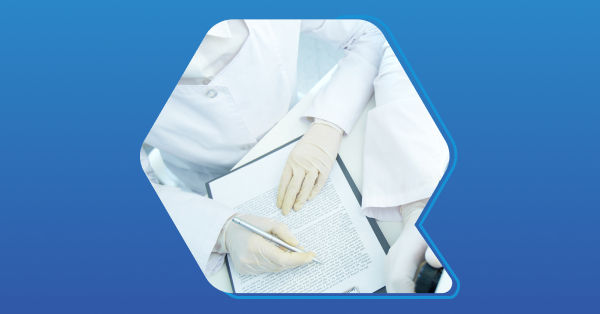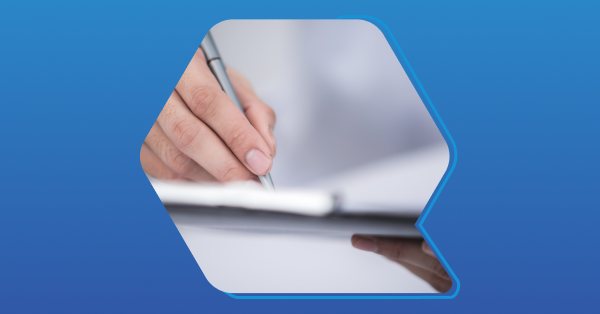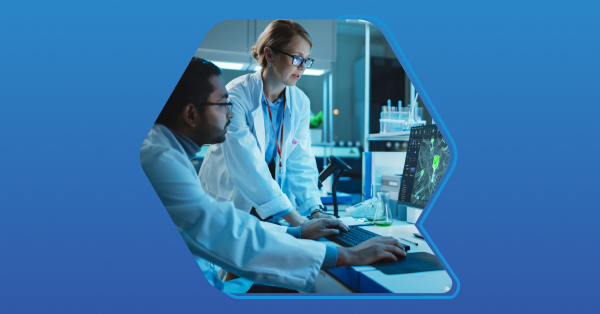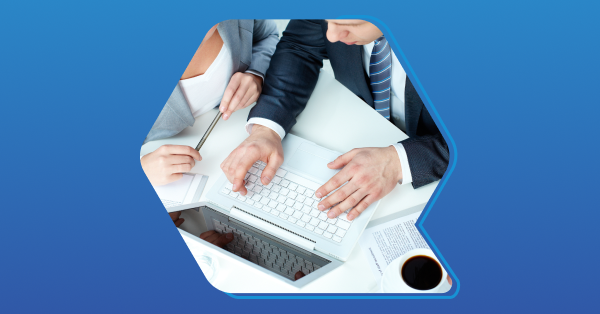How a LIMS Helps With Lab Equipment Maintenance & Scheduling

How a LIMS Helps With Lab Equipment Maintenance & Scheduling
Relying on manual equipment checks and whiteboards for maintenance schedules?
Your lab (and your data) is at risk. Of what, you might ask? Unreliable data. Corrupted test results. Slowdowns due to maintenance downtimes.
If your lab relies on manual methods to manage equipment maintenance schedules, it’s time to automate things with a LIMS. A LIMS is a powerful tool that can revolutionize how you manage and maintain your lab equipment.
In this article, we'll explore the key ways a LIMS can help you stay on top of equipment maintenance, reduce errors, and improve overall lab efficiency.
What is a LIMS?
New to LIMS? LIMS is an acronym for Laboratory Information Management System. It’s a software platform that helps labs:
- Manage and organize data
- Track samples
- Automate processes and workflows
- Manage inventory
- Handle invoicing and billing
- Create reports on the fly
- Integrate lab instruments
LIMS have evolved into sophisticated systems that support a wide range of laboratory activities, from sample management and quality control to data analysis and reporting. A LIMS can also be a fantastic asset to your lab by helping calibrate equipment and automate maintenance schedules.
Why Proper Equipment Management Matters - And How a LIMS Can Help
Proper management of your lab’s equipment is critical to ensuring the reliability and dependability of your tests. It is also a core part of maintaining your lab’s data integrity, so why leave it up to risk-prone manual processes?
Manual equipment maintenance tracking is time-consuming, error-prone, and, frankly, a headache. Improper equipment management can lead to the following:
- Rapid wear and tear of equipment, slowing your lab down and racking up costs
- Inaccurate results due to malfunctioning or improperly calibrated equipment
- A loss of credibility (due to the aforementioned inaccurate results)
- Wasted time and resources playing catch up in your lab
- Slowdowns due to equipment downtime
By automating your equipment calibration and maintenance with a LIMS, you can:
- Save countless hours on manual record-keeping
- Reduce costly errors and downtime
- Ensure your equipment is always calibrated and compliant
- Gain visibility into performance trends over time
Say goodbye to hours spent managing lab equipment and say hello to more time to get things done. Read on as we break down how a LIMS can help automate your lab’s equipment maintenance and management.

6 Ways a LIMS Helps Labs Maintain Their Equipment
Here are six ways to use a LIMS to automate, maintain, and manage your lab equipment. By the end of this list, you’ll have everything you need to streamline your lab.
- Documenting equipment information and details
- Integrate with and monitor instruments
- Equipment scheduling
- Ensure equipment upkeep
- Manage calibration and maintenance logs
- Track performance over time
Documenting Equipment Information and Details
Every piece of equipment in your lab needs to be documented at some point:
- When you receive a new piece of equipment
- When equipment is calibrated
- When equipment is repaired or replaced
This useful information tends to be shoved into a drawer with the other paperwork your lab forgets about or hidden in a file directory on your computer. While there’s a chance you never need to recover that information, in the event you do, finding it can be a miserable task.
With a LIMS, you can quickly enter all this information, including:
- The manufacturer
- Serial number
- Model number
- Installation date
- Cost
You can also upload PDF copies of user manuals and training documents so that your entire staff can easily access all documentation and records.
Integrate with and Monitor Instruments
A LIMS does more than simply store PDFs and records in one place.
It can integrate with your lab equipment to capture data, monitor performance, and receive real-time alerts.
We’ve written extensively about how data capture can eliminate manual data entry and reduce the risk of data errors, but the ability to monitor and alert your lab to the health of your equipment is equally important. Equipment errors can lead to downtime, which slows your lab down and compromises test results. With a LIMS, you'll always know the status of your equipment and can quickly identify potential issues before they become major problems.
Equipment Usage and Scheduling
Have your staff ever needed to use a piece of equipment only to find it’s already in use?
Nothing is more frustrating than the avoidable slowdowns caused by hectic work schedules and a lack of visibility into how your lab equipment is used. Managing this manually is a massive effort, but a LIMS can make scheduling equipment a breeze by giving visibility into when and how each piece of equipment is being used.
Ensure Equipment Upkeep
Regular maintenance is crucial for keeping your lab equipment in top condition.
This is especially true for complex lab equipment that requires regular maintenance. As your lab scales, it can take a lot of work to keep up with the various maintenance and calibration schedules to keep things running smoothly.
For instance, some lab equipment requires monthly maintenance, while others might only need servicing every 6-12 months. Managing this manually quickly becomes a nightmare, putting your lab at risk of poorly calibrated or broken equipment that stops work in its tracks.
A LIMS can help you stay on track by automating maintenance schedules and sending reminders when it's time for routine upkeep. You can set up custom maintenance plans for each instrument, ensuring no critical tasks get overlooked.
Store logs for Maintenance and Calibration
Do you know the last time someone calibrated your lab equipment? How about the last time you had maintenance performed?
Recording this information with pen and paper (if you record it at all) is a recipe for disaster as information becomes siloed or lost in your lab. A LIMS digitizes everything so you can easily see the dates of equipment installation, calibration, and maintenance. This brings critical information about the state of your lab all in one place for your entire staff. It also makes managing equipment maintenance schedules a breeze.
With a LIMS, you can easily access calibration records, view historical trends, and demonstrate compliance with regulatory requirements. You can have confidence in your equipment's accuracy and the integrity of your lab's data.
Track Equipment Performance Over Time
Understanding how your equipment performs over time is key to making informed decisions about maintenance, repairs, and replacements.
A LIMS enables you to track and analyze equipment performance data, providing valuable insights into trends and patterns. You can monitor key metrics such as uptime, error rates, and maintenance costs, allowing you to identify areas for improvement and optimize your lab's efficiency.
With a LIMS, you can make data-driven decisions that will keep your lab running at its best.
Ready to Modernize Your Lab? Download our Free Guide to Choosing the Right LIMS
A LIMS is more than a piece of software for your lab: it’s a source of truth for your lab’s data and an automated assistant in managing and maintaining your equipment and instruments.
Poor maintenance leads to inaccurate results and reduced productivity–neither are things that a modern lab can stand. With a LIMS integrating your instruments, automation schedules, and records in one place, your lab can focus on getting more done and spend less time managing the day-to-day operations.
Don't let equipment issues hold your lab back any longer – invest in a LIMS and experience the benefits of a well-maintained, highly efficient lab operation. Download our free guide to choosing the right LIMS.








